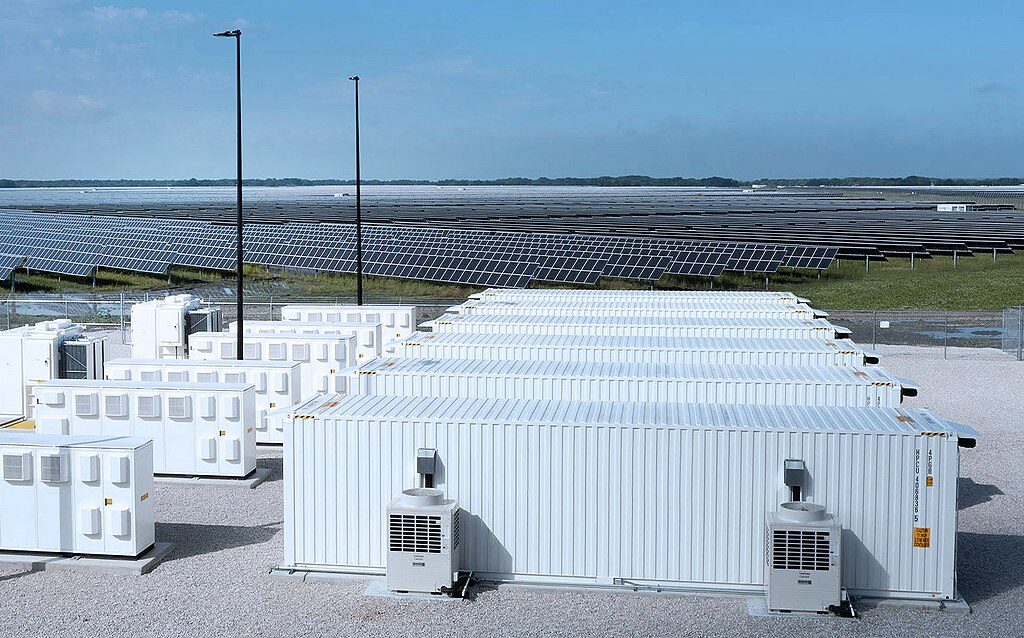The U.S. Department of Energy set a goal to reduce the cost of grid-scale, long duration energy storage by 90% within the decade.
As the second target within DOE’s Energy Earthshot Initiative, the so-called “Long Duration Storage Shot” aims to accelerate breakthroughs that store electricity generated by the hundreds of gigawatts of clean energy that the agency expects to come onto the grid over the next few years.
DOE said that several of its offices conduct energy storage activities, and the administration’s Fiscal Year 2022 Budget Request included a total of $1.16 billion for those activities. Pending appropriations from Congress, DOE said it anticipates funding opportunities and other activities to help advance its goals.

Image: SMUD
DOE said that long-duration energy storage – defined as systems that can store energy for more than 10 hours at a time – would support a low-cost, reliable, carbon-free electric grid. Cheaper and more efficient storage would make it easier to capture and store clean energy for use when energy generation is unavailable or lower than demand.
The storage initiative will consider all types of technologies, including electrochemical, mechanical, thermal, chemical carriers, or any combination with the potential to meet duration and cost targets for grid flexibility.
Currently, pumped-storage hydropower is the largest source of long duration energy storage on the grid, DOE said. And lithium ion is the primary source of new energy storage technology deployed on the grid, providing shorter duration storage capabilities.
DOE developed the target through its Energy Storage Grand Challenge (ESGC), which are linked across the Department’s Offices of Energy Efficiency and Renewable Energy, Electricity, Fossil Energy and Carbon Management, Science, Nuclear Energy, and Technology Transitions, as well as the Advanced Research Projects Agency – Energy.
The first Earthshot – Hydrogen Shot – was announced on June 7. It sets a cost target to speed innovation and spur demand of clean hydrogen by reducing the cost by 80%.
DOE said it plans to hold a series of events, including a Long Duration Storage Shot Summit to be held on the Autumn Equinox, also known as World Energy Storage Day, on September 22.
Altus Power finds a buyer
Altus Power and CBRE Acquisition Holdings said they will combine, resulting in Altus Power becoming a public company listed on the New York Stock Exchange under the ticker symbol AMPS. Acquisition Holdings is a special-purpose company sponsored by CBRE Group, one of the world’s largest commercial real estate services firms.
Altus Power is currently wholly-owned by its management team and Blackstone Credit, and provides solar generation, energy storage, and EV-charging stations across the U.S. Since its founding in 2009, Altus Power has built or acquired more than 200 distributed generation solar facilities totaling more than 265 MW from Vermont to Hawaii. The company said it expects to end 2021 with a solar asset portfolio of more than 400 MW.

The transaction is anticipated to generate gross proceeds of up $678 million of cash, which will be used to fund the company’s growth and strengthen the combined company’s balance sheet.
Proceeds include a $275 million fully committed common stock private investment in public equity (PIPE), anchored by CBRE Group and existing investors, including Altus Power management and Blackstone Credit, as well as new investors, including ValueAct Capital, Liberty Mutual Investments, and other institutional investors. The pro forma implied equity value of the combined company is $1.58 billion at the $10 per share price in the transaction.
Altus Power’s leadership will remain, with Lars Norell and Gregg Felton continuing as co-CEOs of the combined company. The Board of Directors of the combined company will include representation from Altus Power, CBRE, Blackstone Credit, and ValueAct Capital, and have a majority of independent directors.
The transaction was approved by the boards of Altus Power and Acquisition Holdings. The deal is expected to close in the fourth quarter.
Hydrogen deal for air carriers
Los Angeles-based Universal Hydrogen signed two letters of intent with air carriers to convert commercial aircraft to hydrogen as fuel.
One letter of intent was with Air Nostrum, a regional airline based in Valencia, Spain, and covers the purchase of 11 turboprop conversion kits for use across the airline’s existing and future fleet. The kits include a hydrogen fuel cell and electric motor that replaces the aircraft’s existing turboprop engine. The kits also are compatible with Universal Hydrogen’s modular hydrogen capsule technology that allows for the delivery of hydrogen to airports without the need for purpose-built infrastructure.
In addition to the aircraft conversions, Universal Hydrogen would become Air Nostrum’s long-term green hydrogen service provider. The aircraft are expected to have equivalent or better unit economics compared to the existing fleet.
Universal Hydrogen signed a second letter of intent with Icelandair Group, through which the two will pursue green hydrogen as a propellant for Icelandair’s domestic aircraft fleet of Dash 8 turboprops. Universal Hydrogen will provide its aftermarket hydrogen conversion kit for regional aircraft, as well as a fuel distribution system.
Once the Dash 8 conversions are successfully completed, Universal Hydrogen and Icelandair would enter into a long-term fuel services contract to provide green hydrogen for Icelandair’s fleet at scale.
This content is protected by copyright and may not be reused. If you want to cooperate with us and would like to reuse some of our content, please contact: editors@pv-magazine.com.









Your art choice of SMUD’s Rancho Seco PV array against the backdrop of their long-decommissioned Babcock & Wilcox nuclear plant was quite droll. Let’s all hope that DOE has put nuclear power fantasies behind it, or at least limited them to perpetual prototyping in Idaho of “next generation” designs.
Rancho Seco’s legacy is:
1) exposing NRC’s failure to address known safety deficiencies that led to an event ranked only after TMI and Brown’s Ferry for near loss of containment.
2) setting the precident of early closure after only 14 years of 40% operation, and
3) SMUD’s early incentive program that kick-started rooftop solar in California.
UtilityDive.com has an article about a Siemens/Malta partnership:
Siemens and Malta will produce a heat pump and other engine components that could support a 100 MW system for between 10 and 200 hours of storage.
Malta is a Google X spinoff.
We had the Siemens/Malta story July 8 here